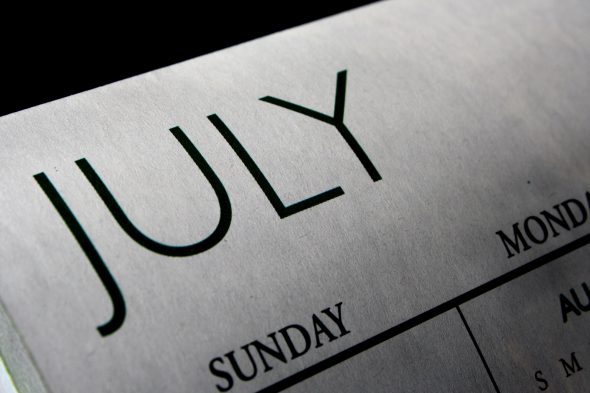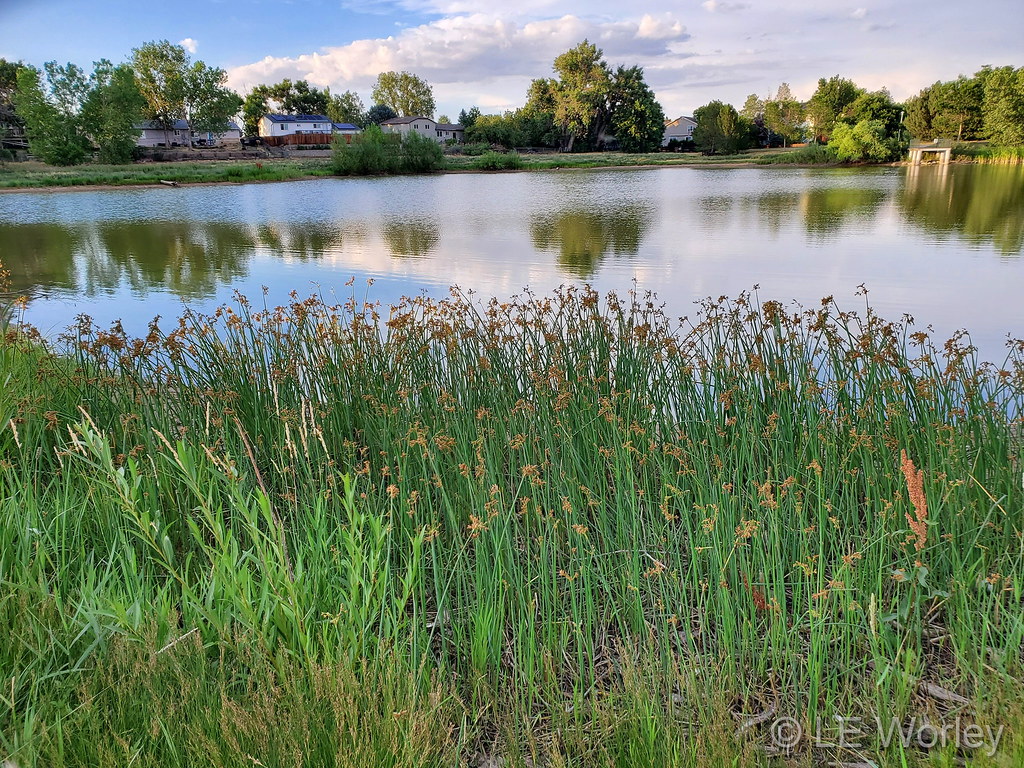As we move further into summer, we see a decrease in traditional things associated with severe weather like tornadoes. However, there is a corresponding increase in heavy rain as Colorado gets closer to its monsoon season. We see many occurences of dangerous flooding as well as damaging hail, deadly lightning and more as we look back at this week in Denver weather history.
1-18
In 1874…a streak of 18 consecutive days of 90 degrees tied for second with another streak that was later set in the summer of 1901. The record of 24 consecutive days was established in the summer of 2008.
1-31
In 2012…it was the hottest July on record in Denver since weather records began in 1872. The average temperature for the month was 78.9 degrees which was 4.7 degrees above normal. There were 27 days in which the high temperature equaled or exceeded 90 degrees…which established a new record. There were also 7 days in which the temperature equaled or exceeded 100 degrees which tied the record set in 2005.
6-23
In 1901…a streak of 18 consecutive days of 90 degrees tied for second with another streak set in the summer of 1874. The record of 24 consecutive days was established in the summer of 2008.
7-25
In 1934…a streak of 15 consecutive days of 90 degrees ranked 5th on the list of hot streaks. The record of 24 consecutive days was established in the summer of 2008.
11
In 1872…heavy rainfall started at 4:00 pm and continued into the night. The heavy rainfall damaged homes and buildings in all parts of the city. Rainfall totaled 1.64 inches.
In 1888…the temperature reached 100 degrees in downtown Denver.
In 1954…the high temperature climbed to 102 degrees at Stapleton Airport.
In 1970…a girl walking in a park in southeast Denver received eye and facial injuries when lightning struck nearby. Lightning also caused numerous power outages and heavy rainfall produced local flooding at several locations across metro Denver.
In 1974…large hail up to 1 1/2 inches in diameter fell in Thornton.
In 1990…the worst hailstorm in American history in terms of dollar damage at the time battered metro Denver. Storm damage totaled 605 million dollars…as it cut a 5-to 10-mile wide swath from just southeast of Estes Park to northeast of Colorado springs. Hail as large as baseballs (2.75 inches) pounded metro Denver. Hardest hit areas were southeast Boulder County…the Jefferson County Airport in Broomfield… Arvada…east Wheat Ridge…southwest and south-central Westminster…west Thornton…northwest…west-central and downtown Denver…northeast and east-central Lakewood…just east of Littleton…portions of Arapahoe County west of I-25… And northern and central Douglas County near Castle Rock and franktown. Golf ball to baseball size hail severely damaged roofs on thousands of homes and buildings…battered tens of thousands of automobiles…windows…signs…street lights…and traffic signals…stripped paint…awnings…and trim from buildings…punched holes in the roofs of two homes in Arvada…knocked out power and telephone service to thousands of homes and businesses…defoliated thousands of trees…ripped up greens and fairways on a number of golf courses…and severely damaged several aircraft tied down at Jefferson County Airport. Hail the size of baseballs fell for several minutes in old town Arvada. Later…golf ball size hail and heavy rain pummeled two northwest Denver amusement parks. Hardest hit was Elitch Gardens amusement park where 47 people were injured and received treatment for bumps…cuts…and bruises at local hospitals. Many of the injured were stranded on rides during the storm when power failed. Hail clogged storm sewers…causing rain water to back up 3 to 6 feet deep on some roads and intersections in Arvada. Several basements were flooded. In some places hail was washed into drifts several feet deep. In addition… The storm spawned 2 small tornadoes. One touched down briefly in Lakewood near 6th avenue and Kipling Blvd….but did no damage. In Castle Rock…a tornado (f1) did heavy damage to some homes and vehicles in the Founders Village development near Ridge Road.
In 2001…lightning struck two homes in Thornton. Most of the damage was confined to the attics of both homes. Hail as large as 3/4 inch in diameter fell in Keenesburg…Longmont… And near Boulder.
In 2015…a peak wind gust to 55 mph was measured from the northwest at Denver International Airport. A trace of rainfall was also observed.
11-12
In 1872…heavy rain from 4:00 pm until 2:00 am caused much damage. Rainfall totaled 1.76 inches.
12
In 1881…during the early evening…a brisk rain fell for 30 minutes from a nearly clear sky containing not one tenth of clouds with the sun shining brightly. Rainfall was 0.16 inch.
In 1885…thunderstorms produced widespread lightning across the city during the evening. Several people were injured when their homes were struck by lightning.
In 1954…the high temperature reached 101 degrees at Stapleton Airport.
In 1962…lightning struck and killed a Denver man…while he was assisting a co-worker with his car.
In 1971…the temperature climbed to a high of 101 degrees at Stapleton International Airport.
In 1974…hail to 3/4 inch in diameter fell in Castle Rock.
In 1991…hail to 2 inches in diameter fell in Thornton with golf ball size hail in Brighton. Dime size hail was recorded in the city of Denver. Very heavy rain caused flooding across metro Denver. Water was up to 2 feet deep in parts of Golden where one foot of water was reported in the lot of a mobile home park. Flood water washed away part of a parking lot at the Colorado school of mines in Golden. Heavy rain caused a rock slide and flooding along I-70 in the foothills just west of Denver. Flood waters were a foot deep at the intersection of I-70 and I-25 just north of downtown Denver. A funnel cloud was sighted just east of the Rocky Mountain Arsenal.
In 1996…very heavy rainfall from a fast moving thunderstorm dumped 2 to 3 inches of rain within an hour over southern Jefferson County. Two people were killed near the town of Buffalo Creek when a 20-foot wall of water flooded the area. Utility poles and trees were uprooted; cars… Propane tanks…and bridges were destroyed in the flood’s path. Entire buildings were moved from their foundations and heavily damaged by the floodwaters. The first fatality occurred along State Highway 126 when the driver of a pick-up truck was washed off the road by the deadly wall of water. The second death occurred farther upstream when a man in a 5th-wheel trailer was washed away. This was the second disaster to strike the area in the last couple of months. The community was already recovering from a wildfire which burned about 12 thousand acres of forest land in late May. With the forest burned by fire…very little vegetation was available to slow the storm’s runoff…which resulted in the flash flood. Power…water…and sewer service were heavily damaged in the flood and…in some cases…beyond repair. The cost of repairing the roads and water system in the area was estimated at around a half million dollars. Elsewhere across metro Denver…severe thunderstorms produced hail…damaging winds…and small tornadoes. Weak tornadoes (f0) were reported in Broomfield… 3 miles east of Englewood…and in Dacono. No damage was reported…except a trampoline was blown into a window and several trees were downed in Broomfield. Thunderstorm wind gusts estimated as high as 60 mph blew a fence down in Louisville where winds also toppled a tree near a house. The house received only minor damage. Large hail…strong winds and heavy rain caused substantial property damage in portions of southeastern Boulder and northern Jefferson counties. Damage estimates in the Broomfield area alone were about 1 million dollars. Winds gusted to 81 mph in Broomfield. Large hail…3/4 to 1 1/2 inches in diameter fell in Evergreen…Lakewood…Englewood…Broomfield…near Morrison…northeast of Boulder…and just east of Denver International Airport.
In 2000…heavy rain fell across a portion of the Hi Meadow Fire burn area near Buffalo Creek…causing localized flooding. About 3/4 inch of rain fell in 30 minutes over Miller Gulch. Some culverts become plugged by debris from the fire. As a result…small sections of a U.S. Forest Service road along Miller Creek were washed out. Lightning struck a home in Castle Rock…causing extensive damage to the roof…attic…and second floor.
In 2011…severe thunderstorms developed over parts of Adams and Denver Counties. At Denver International Airport…a severe thunderstorm produced a peak wind gust to 66 mph… with another gust to 59 mph measured in Denver. In Commerce City…the intense winds blew down a large tree.
Continue reading July 11 to July 17: This week in Denver weather history



